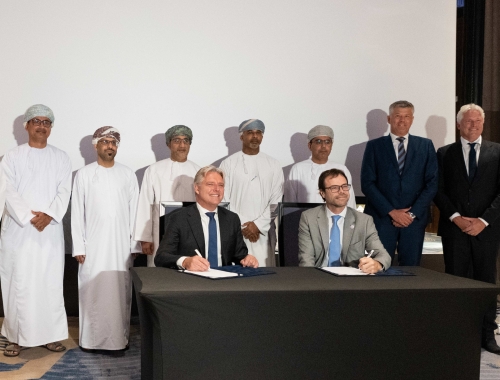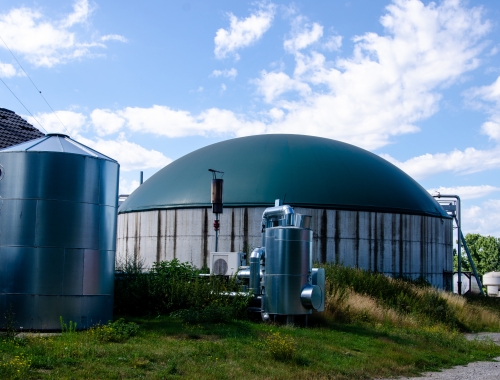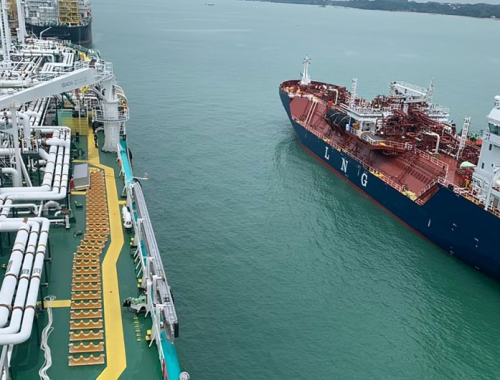Natural gas: You are what you eat
SUMMARY
Natural gas’s role in global food production requires the lowest cost, large-scale solution for low carbon hydrogen soon, which means CCS. [Image credit: Liudmila Chernetska/iStock]
By Ross McCrackenPOSTED IN:
Mention natural gas and most people in Europe at least will think of the heat it provides for homes, or its role in electricity generation. They will think of the negatives too – CO2 and methane emissions. Perhaps they will compare it positively with coal, the global use of which hit an all-time high last year; perhaps they will compare it less favourably against renewable energy technologies.
But they are unlikely to think about the food on their plate, and less likely to know about the role natural gas plays in meeting the world’s ever-growing need for nutrition.
Synthetic nitrogen
To understand, we have to dial back to the first decade of the 20th Century, when there were a mere 1.6 billion people on the planet, less than a quarter of today’s population.
German chemist Fritz Haber developed a method of reacting hydrogen with atmospheric nitrogen to produce ammonia. Ammonia can be applied directly to soil as a plant nutrient or used as the basis for a variety of different nitrogen fertilisers.
Nitrogen in the air is inert, but once its molecular bond is broken into single atoms it becomes reactive with other elements creating new molecules which can be absorbed by plants.
Carl Bosch was responsible for translating Haber’s chemistry into a large-scale, economically viable process, which combined hydrogen with nitrogen using an iron catalyst under high temperatures and pressures.
As a result, the nitrogen fertiliser industry was born. The Haber-Bosch process created an artificial means of nitrogen fixation and consequently “detonated the population explosion, driving the world’s population from ~1.8 billion in 1913 to 6.7 billion in 2009.” 1
From coal to gas
The Haber-Bosch process initially ran on ‘water gas’, a fuel gas created by passing steam over hot coke, as the cheapest source of producing hydrogen, although initially Bosch tried electrolysis, which was then deemed too expensive. However, a cleaner alternative to coke was on the way.
The industrialisation of ammonia production was taking place in tandem with the spread of natural gas as opposed to manufactured gas. Natural gas provided a large-scale supply of hydrogen, after steam reforming, allowing the wider expansion of nitrogen-based fertiliser production.
This was a revolution. The value of nitrogen fertiliser had long been recognised. In the second half of the 1800s, huge quantities of guano were imported to Europe, mainly to the UK, from Peru and other South American countries. An idea of the value of this nitrogen-rich fertiliser can be gained from the small size of the ships then in operation and the perilous Atlantic crossing they faced. From 1840-1880, guano was Peru’s largest commodity export and guano trade the bedrock of the nation’s finances.
Post Haber-Bosch, the supply of nitrogen-based fertilisers in Europe was no longer dependent on Atlantic trade but could be produced at scale anywhere in the world where there was a supply of natural gas, the accessibility of which was much enhanced by the emergence of LNG from the 1960s.
Nitrogen fertilisers today
In India, according to the country’s Petroleum Planning & Analysis Cell, 33% of the country’s natural gas sales were to fertiliser producers in the 2022/23 financial year. Of the 19.4bn m3 sold, 15.3bn m3 came from LNG imports. India’s population is now estimated to exceed China’s, making it the most populous country on earth and it remains heavily agrarian, with around 900mn people living in rural areas. Fertilisers are essential for maintaining agricultural yields and feeding the population.
Plants, of course, need more than nitrogen fertiliser to grow. Phosphate and potassium are also necessary. Unlike nitrogen fertilisers, potassium-rich potash and phosphates are mined. Although some countries such as Russia, Canada and Belarus (potash) and China, Morocco and Israel (phosphatic fertilisers) are large exporters, resources are relatively abundant and geographically widespread. But these fertilisers are not a substitute for nitrogen – plants need all three elements to grow.
In 2020, the world consumed 258.7mn tonnes of nutrients. Of this, 112.4mn tonnes was in the form of nitrogen fertilisers. The EU consumed 16mn tonnes of nutrients, 9.1mn tonnes of which were nitrogen based.
Industry association Fertilisers Europe2 estimates that 50% of the global population is fed thanks to mineral fertilisers. The UN forecasts that the world population will grow from 8 billion in 2022 to 9.7 billion in 2050, while, according to non-governmental organisation Concern Worldwide, the number of undernourished people has risen from 572mn in 2017 to about 735mn in 2023.3 Mineral fertilisers are essential to meeting the world’s growing demand for food.
Downsides and decarbonisation
The invention of the Haber-Bosch process has been called one of the most important in human history and attributed to the avoidance of mass starvation in the 20th Century.4 But it comes with some pretty hefty downsides.
By industrialising nitrogen fixation, the process has interfered with the earth’s natural nitrogen cycle. Nitrate pollution is a growing concern. To gain the maximum nitrogen uptake, more nitrogen is applied to plants than they can absorb, leading to run off, which causes eutrophication and water pollution, the formation of nitrogen oxides and ozone both atmospheric and at ground level. Many countries are now trying to make the use of nitrogen fertilisers more efficient to minimise their unwanted side effects.
More efficient use of nitrogen fertilisers would go a long way to addressing the adverse impacts of their use, but the problem of nitrate pollution exists irrespective of the feedstock used.
For natural gas, the primary problem is carbon emissions. The Haber-Bosch process creates large quantities of CO2 as a result of the steam reforming of natural gas to produce the hydrogen required for ammonia production. The hydrogen in CH4 combines with nitrogen to form ammonia, but the carbon combines with oxygen to create CO2. According to some estimates, nitrogen fertiliser production and use account for 5% of global GHG emissions.5
There are alternative ways of producing hydrogen, but they are expensive and fertiliser use is extremely price sensitive, particularly in developing economies. Make fertiliser too expensive and it will not be worth the gains in increased yield, leading to a fall in food production – unless crop prices also rise.
Electrolysis based on renewable power offers a sustainable pathway, but less than 1% of the world’s hydrogen is made in this way at present and costs remain far higher than hydrogen produced from natural gas. Moreover, the demands on renewable hydrogen are coming thick and fast from every corner of the energy sector – for blending in heating, as a feedstock for synthetic fuels, to decarbonise iron, steel and cement, as a feedstock for chemicals and plastics and more. Yet total decarbonisation of the power sector alone, and then only in some countries, is still estimated to be more than a decade away.
The production of blue hydrogen – combining steam reforming with carbon capture and storage (CCS) – while not a perfect solution, appears, at the very least, a transitionary technological combination that can help meet both decarbonisation requirements and maintain sufficient feedstock at an affordable price for the fertilisers on which world food security depends.
Future hydrogen costs
The price sensitivity of fertiliser use is very important and the cost of production of green hydrogen needs to fall substantially to be competitive with blue hydrogen.
A realistic analysis by CRU completed in 2023 challenged cost projections for future green hydrogen production, arguing that only in its most optimistic scenario would costs fall to $1.5/kg by 2050, excluding power connection costs, storage, compression and distribution. This would put green hydrogen on a par with blue hydrogen production, not make it cheaper. And then only by 2050.
Moreover, achieving this would require a 70-80% cost reduction in system capital expenditure and a 65% reduction in renewable energy costs. In fact, CRU argues that in its most realistic scenario, green hydrogen will not be available for less than $3/kg even in 2050.
This is not an affordable price for fertiliser production, even if sufficient green hydrogen could be produced.
The combination of scale, price, timing and the vital role fertilisers play in feeding the world require the widespread deployment of CCS to reduce emissions from fertiliser production. This would provide a significant degree of decarbonisation, early on and without subjecting the agricultural sector to an enormous price shock with potentially devastating consequences in terms of food availability and affordability.
Of course, blue hydrogen production is not emissions free. Carbon capture rates are not 100% and methane is emitted along the gas supply chain. It is a pragmatic solution, not a perfect one, but then the world has never b
[1] Follett, J. R., Follett, R. F., and Herz, W. C.: Environmental and Human Impacts of Reactive Nitrogen, Adv. Nitr. Managem. Water Qual., SWCS, Ankeny, Iowa, USA, 2010.
[2] https://www.fertilizerseurope.com/wp-content/uploads/2023/07/Industry-Facts-and-figures-2023.pdf
[4] Vaclav Smil, https://www.nature.com/articles/22672








